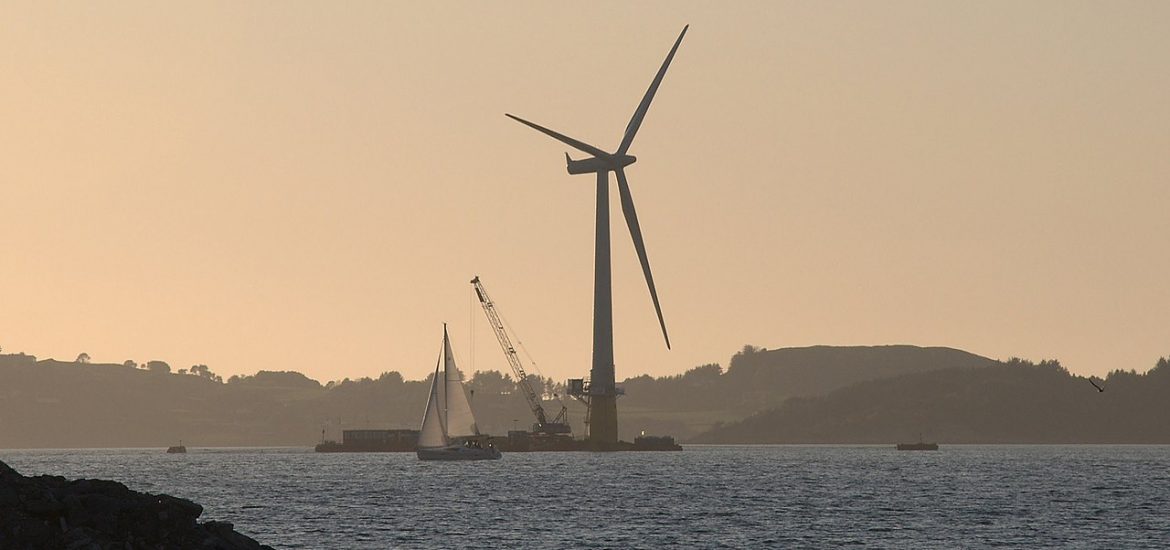
The Norwegian company behind the world’s first floating wind farm, Hywind (pictured) off Peterhead in Scotland, has revealed it is looking at further sites around the Scottish coast to boost wind-powered generation.
The government-owned Statoil believes the success of the Hywind Scotland project could lead to others developments in deeper water, including in the North Atlantic off Scotland’s windy west coast.
The 30-megawatt Hywind Scotland wind farm went officially online in October. There are three more test and demonstration projects with planning consent and seabed rights from Crown Estate Scotland, which has to license Scottish maritime projects.
Calum Iain MacIver, director of development at Western Isles Council, said opportunities for further development “opens up opportunities for the seas around the Outer Hebrides, where the wind resource is possibly unparalleled”.
MacIver was quoted saying: “Marine Scotland has already identified areas of search for offshore wind to the north and west of the Outer Hebrides and Statoil are reviewing these areas as candidates for future Hywind deployment.
“We continue to engage with Statoil and discuss the potential of the Hebrides as a base for future operations,” MacIver said.
“There is a long way to go, but I think the company see real potential in and around the Hebrides,” he added.
A Statoil spokeswoman commented: “The lessons from Hywind Scotland will pave the way for new global market opportunities for floating offshore wind energy. We are looking for new opportunities globally and there is a huge potential in many areas around the world for floating windfarms.”
She added that an advantage of the technology was lower fabrication costs, while it was also possible to position turbines in depths of up to about 2,600 feet (790 metres).
Crown Estate Scotland has also launched a €56,600 study to evaluate the potential economic benefits of further developing the floating wind-power industry.
The concept is that Scotland could pioneer the technology, creating jobs in engineering, maintenance and other spheres and expand across the EU and beyond.
The study is expected in the summer of 2018, detailing several scenarios for floating wind programmes. It will also seek to determine the impact of governmental policies on the sector and the different economic outcomes.
The project is due to be overseen by Crown Estate Scotland, the Crown Estate, which manages seabed leasing in England, Wales and Northern Ireland, the trade association RenewableUK, Scottish Renewables and the Offshore Wind Industry Council.
“We want to find out the scale of the economic benefits – jobs, supply chain and exports – from growing the Scottish floating wind industry. The results of this study will help the UK government and others take policy decisions on how to support development,” Sian Wilson of Crown Estate Scotland said.
Hywind. Picture credit: Wikimedia





